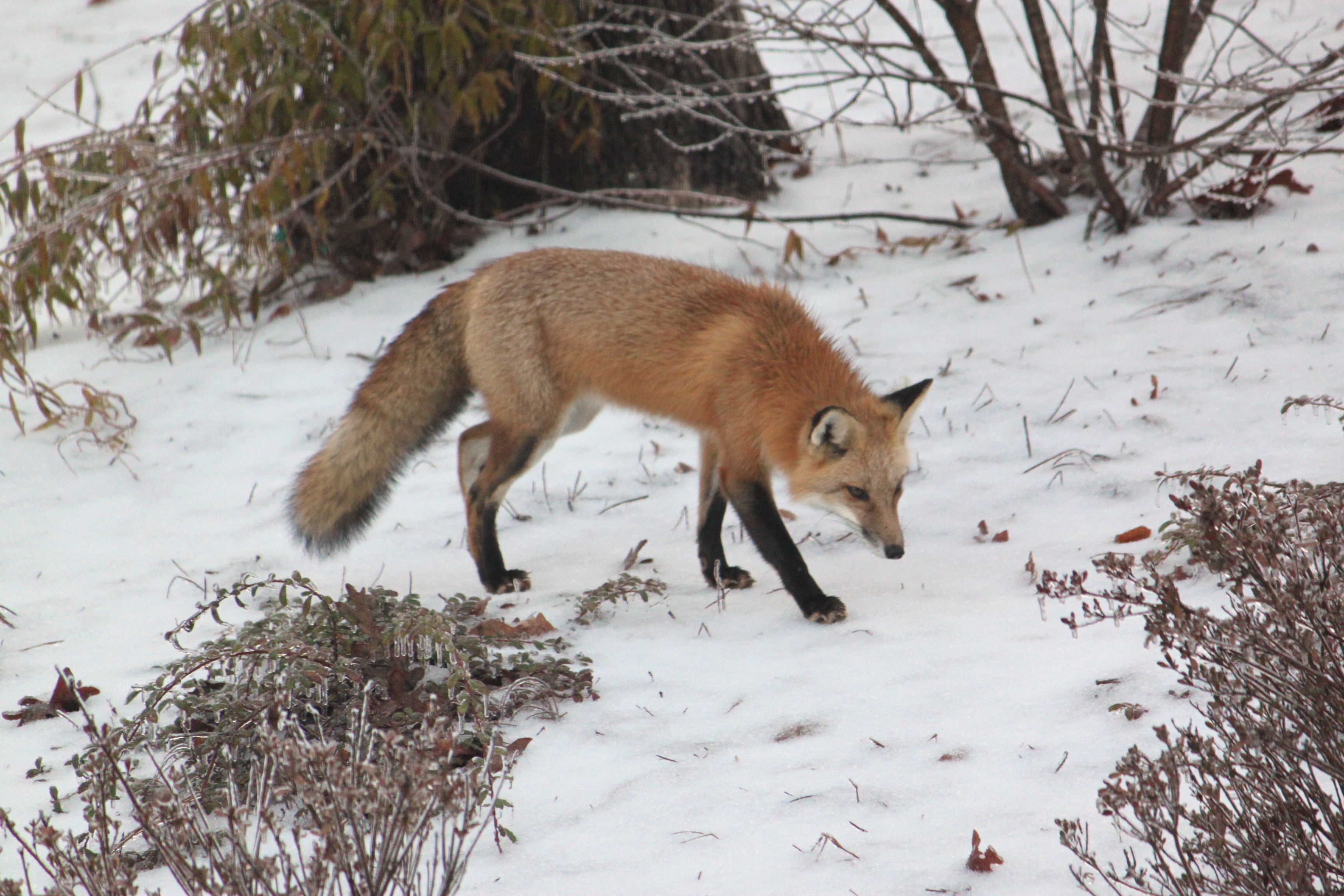 |
 |
|
Red Fox - Vulpes vulpes Canidae Members: | Search Common: Search Scientific: |
|
|
||||||
 Photo by: Rob Van Epps |
| Distribution |
In NC, it occurs statewide, presumably being found in all counties. One of the most widespread ranges of any North American mammal, ranging from Alaska and northern Canada south through most of the lower 48 states. | |
| Abundance | Seemingly somewhat declining, at least in the mountains and Piedmont. Currently, it is fairly common in the mountains, uncommon to fairly common in the Piedmont, and uncommon to fairly common -- but apparently increasing -- in the Coastal Plain. It tends to be greatly outnumbered by the Gray Fox in most areas of the state. The species may have been absent during colonial times (1600's and 1700's), but through local stocking for hunting, and range expansion with the clearing of forests, it has expanded into the state in the past 300 years, and into all parts of the Coastal Plain in recent decades. Note that the iNaturalist website contains photos for at least a third of the counties in the state, and the editors have not taken the time to update the map with "Photo" records/documentation unless the county had previously no known records (white on the map). Though there might be some declines in the state, with known records for nearly 80 counties, the species should probably be given a State Rank of S5, or S4S5. | |
| Seasonal Occurrence | Present and active year-round. | |
| Habitat |
More of an open-country species than is the Gray Fox. Favors overgrown fields, clearcuts, hedgerows, and other brushy areas and forest edges; not normally within the interior of forests. See also Habitat Account for Exotic Invaded Habitats | |
| Behavior | The species is primarily crepuscular and nocturnal in its feeding behavior, and is infrequently seen during the daylight hours. As with the Gray Fox, it is quite shy and secretive for a fairly large mammal. | |
| Comments |
Some mammalogists consider the Eastern populations to have been introduced from Europe, for fox hunting purposes, and thus they consider the species not to be native in NC and other states in the East. However, a fairly recent study (Statham et al., 2012) published in the Journal of Mammalogy stated in the abstract: "We found no Eurasian haplotypes in North America, but found native haplotypes in recently established populations in the southeastern United States and in parts of the western United States. Red foxes from the southeastern United States were closely related to native populations in eastern Canada and the northeastern United States, suggesting that they originated from natural range expansions, not from translocation of European lineages, as was widely believed prior to this study.... Although European red foxes translocated to the eastern United States during Colonial times may have contributed genetically to extant populations in that region, our findings suggest that most of the matrilineal ancestry of eastern red foxes originated in North America." Red Foxes have greatly increased in the past several decades on coastal islands, and this species (as well as the Gray Fox) has been a detriment to beach-nesting birds. Records seem to be declining in the mountains and Piedmont, where it is greatly outnumbered by the Gray Fox. | |
| Origin | Native | |
| NC List | Official | |
| S4 [S5] | ||
| State Status | ||
| G5 | ||
| Federal Status | ||
| subspecies | Vulpes vulpes fulva | |
| other_comName | ||
| synonym | ||
| NC Map Map depicts all counties with a report (transient or resident) for the species. | Click on county for list of all database records for species in that county. |